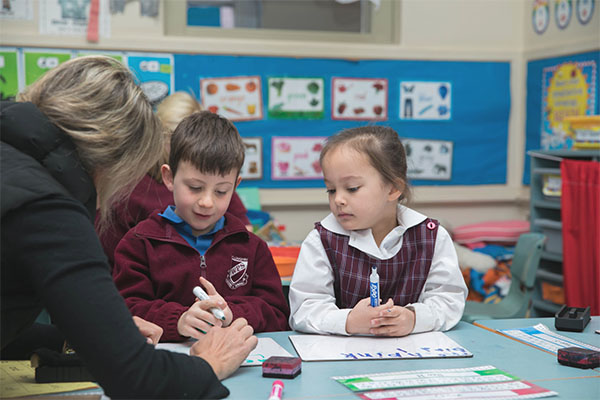How 5 simple actions could prevent hearing loss in your child
August 6, 2019

Rachel had suspected her three-year-old, Sam, was having difficulty hearing. His behaviour and mood were erratic and he’d often tune out to retreat into his own world. But tests repeatedly showed that his hearing was normal. “It was so frustrating as deep down, I knew there was something not quite right,” she says.
As Rachel started to learn about otitis media (inflammation of the middle ear), she organised in-school testing for Sam and his kindergarten peers. Sam, along with others, was finally diagnosed with glue ear.
But his journey didn’t end there. Sam struggled with glue ear until he was 11 years old, requiring two sets of grommets and countless medical appointments. It ended up costing the family $10,000.
Sam’s situation is not unique. Glue ear is difficult to diagnose because there is no pain or fever and it can come and go, sometimes lasting for months. It’s the most common type of otitis media, but it’s the least commonly diagnosed.
“In any given day, up to one in three kids under the age of nine can be having hearing problems because of the immature Eustachian tube system,” says Rachel. “There’s really nothing you can do about that, except as a classroom teacher and as a parent, if you adopt the breathe, blow, cough, wash, chew program (BBCWC).”
This five-step program takes just two minutes.
It starts with jumping or running on the spot for 10 seconds to help dislodge nasal fluid. The child then holds up their hand and takes five deep breaths, blowing each onto a finger, like they’re blowing out candles. This is followed by two strong coughs into the crook of the arm, which helps move the mucus through the respiratory system.
These steps are then repeated, this time blowing on the other hand and coughing into the other arm. The child then blows their nose one nostril at a time until the nasal passage is clear and washes hands at the end to prevent germs spreading.
Finally, chewing on crunchy fruit or vegetables helps open the Eustachian tube and allow air into the middle ear space to keep it healthy.
While hearing loss from glue ear starts out as temporary, it can become permanent if left untreated. More alarming is that in some cases, it results in death. “Up to five kids in Australia every year die of otitis media,” says Rachel. “The ear pus becomes quite toxic if it hasn’t been addressed,” she says. Over time it can eat into the middle ear, mastoid and eventually, the brain.
While it is rare for glue ear to result in death, it can have a significant impact on children’s development. Rachel says that when children struggle with undiagnosed glue ear before they start school, they start on the backfoot.
“If they haven’t caught up by year four, it just becomes too hard and they’re always behind. So add a couple of years to that, you get to high school where you’ve got the influence of other kids… everything’s big and overwhelming and they just disengage,” says Rachel.
Behaviours indicating glue ear may not be obvious to the untrained eye. These include withdrawal and isolation; compulsive or erratic behaviour; mentally wandering off; and the ‘deaf nod’, where children nod to indicate they understand what’s happening, even though they don’t.
Rachel’s journey led her to become a Hearing Support Teacher and Volunteer Director of the Hear our Heart Ear Bus Project. She’s passionate about preventing hearing loss in children and advocates for testing like Sound Scouts to be run in schools. She recommends that teachers implement BBCWC daily.
“Just because you can’t see hearing loss, it doesn’t mean it’s not there,” says Rachel. “If you can just clear those nostrils one at a time and prevent it from coming back, you can open up kids ears and open up their world to a better life.”
Glue ear is just one condition that can lead to hearing loss. Loss of hearing results from a range of causes, can happen at any time, and the signs are not always obvious. The impact can be significant though, so the sooner issues are detected, the better chance a child has of living a normal life.
During NSW Education Week promoting ‘Every student, every voice’, consider whether your child’s voice is being expressed to its full potential. Talk to your school to make sure they’re using the BBCWC program and the free clinically-proven, government-funded Sound Scouts app.

